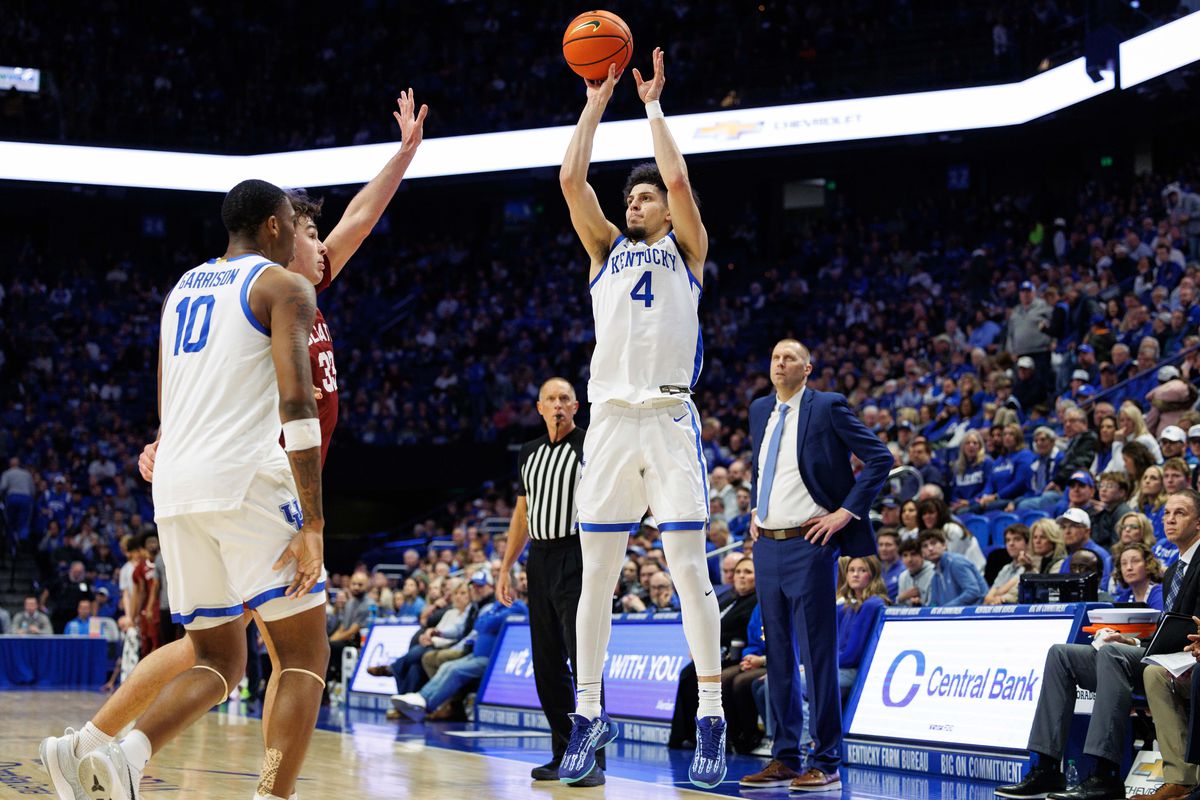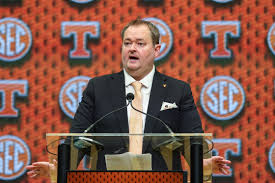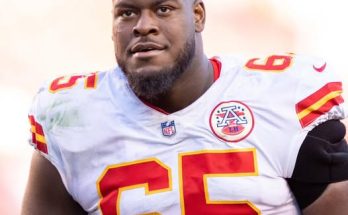As the dust settles on a whirlwind of coaching changes, player departures, and key offseason additions, one thing remains clear: Kentucky basketball is close to being whole, but not quite there. The Wildcats are still a guard short of what would be considered a complete and championship-contending roster. In an offseason defined by turnover and transition, first-year head coach Mark Pope has made solid strides in restocking the shelves in Lexington. Yet even as optimism builds with the arrival of highly-touted recruits and veteran transfers, the glaring void in the backcourt serves as a reminder that the job is far from finished.
When Pope took over following the departure of John Calipari to Arkansas, the roster was in shambles. Kentucky had lost nearly all of its key contributors either to the NBA Draft or the transfer portal. In typical blue-blood fashion, there was little time for a true rebuild; the expectation was that Pope would reload, not rebuild. And to his credit, that’s largely what he’s done. The frontcourt now boasts formidable size and athleticism, with big men who can protect the rim and rebound at an elite level. On the wings, there’s a solid mix of length, versatility, and scoring punch. But in the backcourt—the engine that makes everything go—there’s still a missing piece.
In today’s college basketball landscape, depth at guard is more than a luxury; it’s a necessity. Teams need multiple players who can handle the ball, initiate offense, create shots, defend the perimeter, and hit free throws late in games. Kentucky has some intriguing options, but not enough of them. At present, the Wildcats have one true point guard and a pair of combo guards, but none have proven themselves to be consistent difference-makers at the high-major level. That’s not to say the current crop lacks talent—there’s plenty of it—but depth and experience are two areas of concern.
The lone pure point guard on the roster is a freshman, and while his upside is undeniable, putting the full weight of Kentucky basketball on a first-year player’s shoulders is a gamble. History shows that even the most talented freshman guards can struggle under the bright lights of Rupp Arena and the relentless scrutiny that comes with wearing the blue and white. If he hits a freshman wall or misses time due to injury, the Wildcats would suddenly be in crisis mode with no clear Plan B.
Then there are the combo guards. These are players who can score, play on or off the ball, and bring energy to the floor, but they’re not true floor generals. They’re not the kind of players you entrust with controlling tempo, breaking full-court pressure, or getting the team into its sets with precision and poise. Kentucky fans have seen this movie before—plenty of teams have been undone not by a lack of talent, but by a lack of organization and direction in the backcourt.
Mark Pope knows this. He understands the stakes. He’s not in Lexington to finish fifth in the SEC or sneak into the NCAA Tournament as a 9-seed. He was hired to bring banners back to the rafters, to restore order to a program that has drifted from its championship standard. And he knows that to do that, he needs a battle-tested guard who can lead both on and off the court. Someone who’s been through the wars of conference play. Someone who can take over a game when the offense bogs down. Someone who can settle things when chaos erupts. That player isn’t on the roster right now.
There are still options in the transfer portal, and Pope has been aggressive in pursuing them. But Kentucky is in a race against time. The most coveted names are being scooped up by other high-major programs with similar needs. And while the name “Kentucky” still carries considerable weight, the program’s recent inconsistency has made it harder to land top-tier talent without a compelling pitch. Pope’s vision is persuasive, but players want assurances—they want to know how they’ll be used, who they’ll be playing with, and what kind of success they can realistically expect in Year 1 under a new coach.
Adding to the challenge is the chemistry question. Bringing in a new guard at this stage of the offseason means fitting him into an ecosystem that is still being built. It’s not just about talent—it’s about fit. Does he complement the current personnel? Can he coexist with other ball-dominant players? Will he buy into Pope’s system and embrace the pressure that comes with wearing the Kentucky jersey? These are the intangibles that make roster construction such a delicate process. One wrong fit can throw everything off.
Still, the upside of finding the right guard is massive. With the right addition, Kentucky could go from being a good team to a great one. The frontcourt is more than solid. There’s length, rim protection, and rebounding. There’s athleticism on the wings and enough offensive firepower to compete with the best teams in the country. But without that steadying force in the backcourt, the Wildcats are vulnerable. The margin for error becomes razor-thin in March, and every great team has at least one guard who can carry the load when everything else breaks down.
Think about recent champions. UConn had Tristen Newton. Kansas had Remy Martin and Dajuan Harris. Baylor had Davion Mitchell and Jared Butler. Guard play is the common denominator, and Kentucky needs to catch up in that department. The Wildcats have guards—but they don’t yet have the guard.
There’s also a leadership component that can’t be overlooked. Kentucky’s locker room has undergone a complete transformation. A veteran guard who brings not only experience but maturity and a calming presence could be the glue that holds everything together. It’s easy to get caught up in five-star rankings and NBA potential, but the college game is still won with cohesion, execution, and heart. A battle-tested guard can bring all of that.
The good news is there’s still time. The portal remains open, and opportunities will emerge. A few talented guards are still weighing their options. Some may test the NBA waters and ultimately decide to return to college. Others may be looking for a better fit or a bigger stage. Kentucky can offer that stage. What Pope and his staff must do now is close the deal.
It’s a critical moment in the trajectory of the new era of Kentucky basketball. The fan base is cautiously optimistic but understandably restless. They’ve been through multiple seasons of unmet expectations and early exits. They’ve seen promising rosters fall apart due to poor chemistry or injuries. They’re desperate for a winner—something that looks like Kentucky basketball should look. And they know that to get there, this roster needs just one more piece.
The irony is that the solution doesn’t need to be flashy. It doesn’t need to be a former McDonald’s All-American or a projected lottery pick. It just needs to be someone who understands the game, who thrives under pressure, who makes others better, and who wants the smoke. Someone who can be the heartbeat of this team when it matters most.
Mark Pope’s track record suggests he understands the nuances of roster building. He’s pieced together strong teams at BYU and has shown a willingness to adapt his schemes to his personnel. But Kentucky is a different animal. The spotlight is hotter. The scrutiny is more intense. The demands are higher. Every move he makes will be judged in real-time, and nothing matters more than wins. That’s the harsh reality of the job—and the thrill of it, too.
In many ways, the foundation is already there. The Wildcats have length, talent, and potential. They’ve got a coach who believes in the Kentucky brand and has a vision for restoring its dominance. But they’re still one guard short of being the kind of team that strikes fear into the rest of the SEC and beyond.
Until that hole is filled, the Wildcats will remain incomplete—dangerous, yes, but not yet deadly. Close, but not there. In the ever-competitive arms race of college basketball, “almost” isn’t good enough. And in Lexington, where basketball isn’t just a sport but a way of life, second-best is never the goal.
The countdown is on. One more piece could be the difference between another season of what-ifs and a run to the Final Four. The question now is simple: Who will it be?



